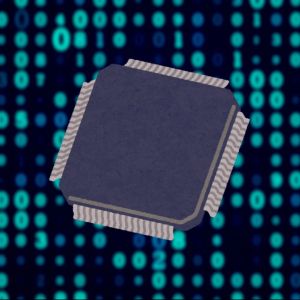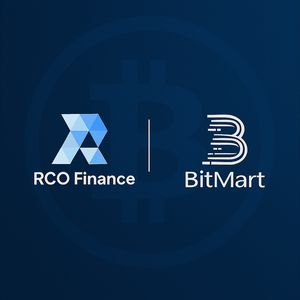2025-09-26 08:47:29
HTX Research:The New Order of Stablecoins (Part II): Exploring Stablecoin Public Blockchains — From Settlement Layer Reconstruction to Next-Generation Design Pa...
Content Introduction 2 1. Differences Between Stablecoin Public Blockchains and General-Purpose Public Blockchains, and TRON’s Success Factors 3 1.1 Concept and Development Background 3 1.2 Drivers Behind Stablecoin Public Blockchains 4 1.3 TRON’s Success Factors 5 2. Representative Stablecoin Public Blockchain Design Paths and Comparison 6 2.1 Arc (Circle) 7 2.2 Tempo (Stripe and Paradigm) 8 2.3 Stable (Bitfinex & Tether) 8 2.4 Plasma 9 2.5 Converge 9 2.6 Codex 10 2.7 Summary and Industry Trends 10 3. Design Recommendations for New Public Chains 11 3.1 Privacy Protection and Compliance 11 3.2 MEV Protection and Transaction Ordering 12 3.3 Scalability and Performance Optimization 13 3.4 Oracle Design and Real-Time Price Feeds 14 3.5 Commodity Trade and RWA Applications 15 3.6 Comprehensive Recommendations and Outlook 16 4. Conclusion 17 References: 17 Introduction PANAMA CITY – 26 September, 2025 – Since 2017, the crypto industry has undergone multiple iterations, with tracks such as DeFi, NFTs, blockchain gaming, and Layer 2 scaling solutions rising and falling in turn. Beyond these narratives, however, the growth of stablecoins has exhibited an exceptionally steady trend. The issuance of stablecoins grew from less than USD 10 billion at the beginning of 2020 to over USD 21 billion by the end of 2024, with trading volume surpassing USD 26 trillion, gradually becoming the “base currency” of the blockchain world. Yet, upon closer inspection of on-chain settlement structures, one finds that while stablecoins are used for clearing on-chain asset transactions, the underlying public blockchains they depend on are not optimized for payment scenarios: Ethereum prioritizes general composability, Solana and others emphasize high-performance general-purpose applications, but existing chains struggle to match the global payment and settlement demands in terms of fees, performance, and compliance support. To address this issue, a new category of blockchains designed around stablecoin payments and settlements has emerged, commonly referred to in the industry as “stablecoin public blockchains.” These blockchains integrate, at the infrastructure level, stablecoin issuance, cross-chain transfers, oracle price feeds, compliance approvals, and application development. They aim to reconstruct payment processes in real-world scenarios such as cross-border remittances, commodity trade, payroll distribution, and B2B settlements. Based on a review of industry materials, this paper systematically analyzes the concept of stablecoin public blockchains, representative projects, and their distinctions from traditional blockchains. It further draws lessons from TRON’s success in the stablecoin settlement space to propose design recommendations for new projects (such as Tempo), covering dimensions including privacy protection, capital efficiency, scalability, oracles, and MEV defense, thereby providing readers with a comprehensive reference. This paper is divided into three major sections: The first introduces what stablecoin public blockchains are and how they differ from traditional blockchains, with a focus on TRON’s success factors; the second reviews the design paths of several representative stablecoin public blockchains, comparing their core features, partners, and progress; the third, using Tempo as an example, explores key considerations for designing new stablecoin public blockchains, with perspectives on privacy, MEV, scalability, oracle design, and applications in commodity trade. 1. Differences Between Stablecoin Public Blockchains and General-Purpose Public Blockchains, and TRON’s Success Factors 1.1 Concept and Development Background Traditional public blockchains (such as Ethereum, Solana, etc.) are often referred to as “DApp chains,” with their core objective being to provide a programming environment for decentralized applications. They emphasize openness, composability, and permissionless innovation. Ethereum, through smart contracts, gave rise to waves of decentralized finance, NFTs, and blockchain gaming, but its scalability and fees have often been criticized in payment scenarios. Solana has made breakthroughs in high performance, but it still focuses on DeFi and NFTs, with a relatively open validator system requiring users to hold native tokens to pay gas fees. In contrast, “stablecoin public blockchains” use stablecoins as the network’s native energy and position themselves closer to the settlement layer. These blockchains exhibit the following distinctive features: Stablecoin as Gas: Transaction fees are paid directly in stablecoins. Fees are stable and predictable, and users are not required to hold volatile tokens as “tolls,” significantly lowering the barrier to entry. Optimized for Payments and Settlements: The goal is not to build a “universal” platform but to focus on stable, secure, and user-friendly payment capabilities, with an emphasis on high TPS, sub-second confirmation times, low latency, and low fees. Built-in Compliance Modules: On-chain primitives such as KYC/AML and Travel Rule fields are preconfigured, enabling seamless access for institutions and banks while reducing the space for gray-area operations. Transaction data can provide regulatory endpoints for supervisory inquiries. Designed Around Real-World Financial Needs: Features include cross-currency settlement, FX matching, unified accounting units, and composable yield-bearing stablecoins, with on-chain instructions closely aligned with real-world clearing logic. Vertical Integration Model: By natively integrating issuance, settlement, and applications across three layers, these projects seek to control critical links. This means bearing the burden of cold-start challenges in the early stage, but benefiting from economies of scale and stronger bargaining power later. https://defillama.com/chain/tron?tvl=false&events=false&chainRevenue=true&groupBy=cumulative Due to these features, stablecoin public blockchains are more akin to settlement “highways” supporting on-chain payments, forming a complementary relationship with traditional blockchains that serve as “multi-functional cities.” The former caters to highly deterministic, high-frequency, high-value capital flows (such as payroll, supply chain payments, and cross-border remittances), while the latter focuses on enriching application ecosystems and smart contract innovation. 1.2 Drivers Behind Stablecoin Public Blockchains The emergence of stablecoin public blockchains is driven by multiple needs and pressures: Cross-Border Payment Pain Points: Traditional correspondent banking paths require multiple banks and clearinghouses, with cumbersome procedures and high costs. A single B2B remittance involving emerging markets may require 3–6 intermediaries, with cross-border settlements often taking over a week. Emerging market enterprises have immense demand for fast, low-cost settlement methods, and stablecoin payments offer a viable solution. Mainstream Blockchains’ Inability to Meet Payment Scenarios: Ethereum’s fees and congestion deter small and medium transactions; while high-performance chains like Solana are cheap, they still charge fees in native tokens, forcing enterprises to bear token volatility risks. Stablecoin public blockchains solve this pain point through unified pricing and gas abstraction. Compliance Requirements and Privacy Protection: Corporate payments must follow KYC/AML rules, while sensitive data such as employee salaries cannot be fully public. The transparency of public blockchains exposes trade secrets and employee income, necessitating infrastructure that balances privacy with regulation. Institutional Demand for Automation: Enterprise-grade payments often involve complex processes such as periodic payroll, supply chain financing, and invoice factoring, requiring integration with off-chain systems and oracles, and support for batch automated execution. Stablecoin public blockchains are often designed with embedded automation modules and real-time oracles to meet enterprise needs. 1.3 TRON’s Success Factors Although general-purpose chains like Ethereum still dominate stablecoin issuance and DeFi, TRON has achieved unique success in stablecoin payments and cross-border transfers, offering an important reference for subsequent stablecoin public blockchains. TRON’s success factors mainly include the following: High Performance and Low Cost: TRON adopts a Delegated Proof-of-Stake (DPoS) consensus mechanism, supporting over 2,000 transactions per second, with confirmation times of just 3–5 seconds and fees below USD 0.01 per transaction. This high throughput and low cost are the foundation for large-scale adoption in payment scenarios. In 2024, TRON had about 2.6 million daily active users, with a total transaction volume exceeding USD 1 billion, while maintaining a per-transaction fee of around USD 0.01. This performance-cost advantage made it the preferred choice for stablecoin users. Strong Focus on Stablecoin Applications: From early on, TRON concentrated its commercial focus on stablecoin cross-border payments and micropayments, building an ecosystem centered on USDT, making it the world’s largest USDT issuance chain. Comparative tables show TRON processes 2,000+ transactions per second, confirms in 3–5 seconds, charges less than USD 0.01 per transaction, and highlights its specialization in stablecoins and micropayments. Its clear positioning allowed it to avoid head-on competition with general-purpose chains. Building Complete Oracle and Ecosystem Services: TRON’s WINkLink oracle provides DeFi applications with price feeds, arbitrary API access, verifiable randomness, and automated execution. In 2025, TRON announced the adoption of Chainlink Data Feeds as its official oracle solution, further enhancing the security and reliability of price data, safeguarding over USD 5.5 billion in on-chain assets. Its robust oracle infrastructure meets the needs of DeFi and enterprise payment scenarios requiring real-time feeds. Compliance and Privacy Primitives: TRON implemented compliance fields such as the Travel Rule on-chain by embedding international transfer information into transaction memos, enabling real-time regulatory review and zero-knowledge verification, balancing compliance and privacy. These mechanisms reduced regulatory risks and attracted a large number of institutional users. Ecosystem Cooperation and Infrastructure Development: TRON partnered with custodians such as Fireblocks, Copper, and Cobo to provide multisig and custody solutions; collaborated with payment firms such as Pundi X and Mercado Bitcoin to integrate TRON stablecoins into XPOS terminals and e-commerce platforms, achieving retail payment adoption. TRON also introduced invoice factoring and commodity DVP (Delivery versus Payment) modules for supply chain finance, leveraging WINkLink oracles and cross-chain bridges to atomically swap warehouse receipt NFTs with USDT, enabling second-level settlement of large trade funds. Market Focus and Economies of Scale: TRON’s global user base is heavily concentrated in emerging markets, meeting cross-border remittance and B2B payment needs. Public data shows TRON’s average daily cross-border USDT settlement volume reached USD 2.13 billion, with 60% consisting of wholesale transfers above USD 100,000 (averaging about USD 219,000 per transaction). This created a closed loop of over 4,000 large transactions per day, both efficient and low-cost. Such scale effects provide capital and community advantages for further ecosystem development. Tron’s collaboration with Turkish exchanges https://www.chaincatcher.com/article/2189276 In summary, TRON was able to break through first in the stablecoin public blockchain track because it optimized its consensus mechanism, fee structure, ecosystem services, and compliance capabilities in a targeted manner, and built brand advantages through partnerships and real-world adoption. Its success highlights that focusing on specific scenarios, lowering costs, strengthening compliance, and building oracle and custody infrastructure are key to the development of stablecoin public blockchains. 2. Representative Stablecoin Public Blockchain Design Paths and Comparison Project Positioning Performance Strategy/Challenges Arc (Circle) USDC settlement layer, issuer-controlled base layer 1-second confirmation, 3000 TPS Ensure predictable costs and reliable settlement, attract institutional users Tempo (Stripe & Paradigm) Payment-first chain, serving Stripe’s global merchants Target 100,000 TPS, sub-second confirmation Leverage merchant network for direct fiat payments, needs balanced compliance and decentralization Stable (Tether & Bitfinex) USDT main chain, enterprise-grade clearing Second-level confirmation, 10,000 TPS Reclaim TRON USDT settlement control, challenge existing monopoly Plasma BTC sidechain, focused on USDT payments High throughput, zero-fee transfers Leverage BTC brand to attract users, with ecosystems already driven by large-scale financing Converge (Ethena & Securitize) RWA + DeFi institutional-grade L2 100ms block time, GigaGas throughput Provide high-performance compliant environment for institutions, connect RWA and DeFi Codex (Supported by Dragonfly) Enterprise-grade payments and financial L2 OP Stack L2 performance, settlement-focused Target payroll/trade settlement, strong financing and cooperation capabilities 2.1 Arc (Circle) Arc is the first native public chain launched by Circle, the world’s second-largest stablecoin issuer. While USDC circulates heavily on Ethereum, Solana, TRON and other chains, the volatility and fees of those underlying chains prevent Circle from precisely controlling the user experience and compliance processes. As a “settlement layer” for Circle, Arc marks the issuer’s shift from token issuance toward providing financial infrastructure. Arc’s design highlights include: USDC as native Gas: Transaction fees are paid directly in USDC, avoiding exchange-rate volatility risk and making fees predictable. High speed and stability: According to official information, Arc aims for sub-1-second transaction confirmations and 3,000 TPS capacity, targeted at cross-border payments and large-value clearing. Optional privacy features: Enterprises and institutions can authorize specific regulators to view transaction details via viewing-key-like mechanisms, enabling selective privacy. Built-in FX and cross-chain modules: Arc integrates Circle’s cross-chain transmission protocol (CCTP), supports on-chain FX swaps (RFQ) and cross-chain USDC minting/redemption. It also plans to launch an interest-bearing stablecoin USYC to connect on-chain yield. Arc is initially maintained by about 20 validators. Arc’s path demonstrates issuers’ desire for control over the underlying layer: to ensure predictable fees and settlement reliability for a stablecoin, the issuer builds a dedicated chain and attracts institutions via FX capabilities. Privacy and MEV are listed by the project as future roadmap items, indicating attention to compliance and user experience. 2.2 Tempo (Stripe and Paradigm) Tempo is incubated by payments giant Stripe together with crypto fund Paradigm, aiming to build a “payments-first” stablecoin blockchain to serve Stripe’s global merchant network. Tempo’s design core includes: Multi-stablecoin Gas and AMM: Tempo allows any mainstream stablecoin to serve as Gas and provides an on-chain AMM for stablecoin swaps, removing the need for users to manually exchange coins. Low fees and predictability: The chain includes payment channels, memo and whitelist features to make collection closer to traditional payment experiences, with low and transparent fees. Extreme performance: The project claims a 100,000 TPS target and sub-second confirmation times to meet payroll, remittance, and micropayment scenarios. EVM and Reth compatibility: Uses Reth as the execution layer, allowing Ethereum developers to easily migrate existing contracts. It has also tested commercial applications in partnership with Visa, Deutsche Bank, Shopify, OpenAI and others. Consortium-chain attributes: Tempo’s nodes are currently run by partner institutions, giving it a consortium-like character with weaker decentralization than traditional public chains; it may gradually open validator participation in the future. Tempo’s strategy is to leverage Stripe’s massive merchant network, connect directly to fiat rails and social-account-login wallets, and provide a near-Web2 user experience. Its challenge is balancing high performance with compliance/privacy while expanding the validator set to maintain public trust. 2.3 Stable (Bitfinex & Tether) Stable is an EVM-compatible Layer 1 chain launched jointly by Bitfinex and stablecoin giant Tether, positioned as the primary venue for USDT. Its goal is to remove friction in large USDT transfers and enable enterprise-grade clearing. Core features: USDT native Gas: Users can pay transaction fees in USDT; peer-to-peer transfers can be Gas-free. Through account abstraction, other stablecoins can also be used to pay Gas. Second-level finality and high TPS: Uses a consensus mechanism called StableBFT (an improved CometBFT variant for high load), and optimistic parallel execution to target 10,000 TPS. Enterprise capabilities: Integrates batch transfer aggregation, compliant-private transfers, and consumer wallets, and supports card rails and merchant acquiring. Provides a full SDK to facilitate developer adoption. Roadmap and funding: Stable raised $28 million in seed funding, with investors including Franklin Templeton and other traditional institutions. It plans to roll out fiat on/off-ramps, debit cards, and an enterprise “fast-lane” to match USDT cross-border clearing needs. Given USDT’s dominance on TRON, Stable’s launch signals Tether’s intention to reclaim control over underlying infrastructure. 2.4 Plasma Plasma is a stablecoin chain developed by a Bitcoin sidechain team, leveraging Bitcoin’s security while being EVM-compatible and focused on USDT payments. Its main characteristics include: PlasmaBFT consensus: A pipelined parallel variant of Fast HotStuff, pursuing faster finality and high throughput. Zero-fee USDT transfers: One of its main selling points is fee-free USDT transfers on Plasma. It supports custom Gas tokens, allowing developers to choose stablecoins or ecosystem tokens for fees. Optional privacy features: Built-in encrypted payments suitable for payroll and institutional clearing. EVM compatibility facilitates migration of existing apps. Native BTC bridge: Provides a non-custodial BTC cross-chain bridge, allowing BTC to enter the EVM environment and participate in the stablecoin ecosystem. Ecosystem partnerships: Has partnered with Yellow Card, BiLira Kripto for remittance services, collaborated with Uranium Digital for uranium trade settlement, and plans integrations with DeFi protocols like Aave and Pendle. In July 2025 it publicly issued the token XPL, raising USD 373 million—oversubscribed sevenfold. Plasma’s strategy is to capture Bitcoin’s large market cap and brand premium, funnel BTC holders and USDT users into a unified sidechain, improve payment efficiency, offer optional privacy, and build a settlement network connected to the BTC ecosystem. 2.5 Converge Converge is an Ethereum Layer 2 network developed jointly by Ethena Labs and Securitize, positioned to connect RWA (real-world assets) and DeFi. Its main features: Arbitrum technology stack: The execution layer uses Arbitrum, with data availability provided by Celestia. It employs a Conduit-driven custom sequencer, targeting 100 ms block times and GigaGas-level throughput. Stablecoin Gas: Uses native stablecoins USDe and USDtb to pay Gas and supports institutions depositing yield-bearing stablecoins (e.g., sUSDe). Institutional-grade security: Key custody and audits are provided by Anchorage, Fireblocks, Zodia, Copper, etc.; node staking of $ENA grants validator access. Partnerships: Works with Hamilton Lane, Pendle, Maple Finance, Aave and others to offer institutions a high-performance, secure environment for RWA and DeFi trading. Converge’s innovation is combining RWA custody, on-chain yield-bearing stablecoins, and high-performance L2 to serve large institutional capital flows into crypto. 2.6 Codex Codex is an Ethereum L2 network backed by investors including Dragonfly, designed specifically for enterprise-grade stablecoin payments, payroll, and trade finance. Its characteristics: Based on OP Stack: Built with Ethereum’s OP Stack and operated by Conduit. This architecture balances EVM compatibility and L2 performance. Gas structure optimization: Transaction fees and Gas abstraction are customized for stablecoin payments, ensuring determinism and reliability of execution. Built-in FX and custody capabilities: Supports multi-currency settlement and foreign exchange, oriented toward real enterprise needs. Final settlement occurs on Ethereum mainnet to guarantee secure finality. Codex launched mainnet in mid-2024, raised USD 15.8 million, and counts Circle Ventures, Coinbase, Cumberland, Wintermute and others as partners. It aims to be the on-chain settlement layer for enterprise payroll and financial management. 2.7 Summary and Industry Trends Comparing the chains above shows that, despite diverse paths, they share many functional commonalities: Stablecoin-native Gas: All chains use stablecoins as the native unit for transaction fees so users need not hold volatile tokens. Some chains support multi-coin Gas or custom Gas tokens to increase flexibility. High performance and low latency: Target TPS is generally above 3,000, with projects like Tempo and Stable emphasizing 10,000–100,000 TPS; Plasma and Converge claim sub-second confirmation. High performance is fundamental for supporting large-value clearing and micropayments. Compliance and privacy modules: Most chains design KYC/AML interfaces, Travel Rule fields, and optional privacy features to facilitate integration with banks and payment institutions. Privacy is achieved via ZK proofs or encrypted transaction pools to enable selective disclosure. Cross-chain and FX support: Arc and Tempo include built-in AMMs or RFQ engines for stablecoin exchange; Plasma provides native BTC bridges; Noble AppLayer supports IBC and EVM interconnectivity. Cross-chain and FX are essential functions for payment chains. Deepening ecosystem partnerships: Every chain collaborates with traditional finance or large tech companies—for example Arc working with banks on FX, Tempo partnering with Stripe for merchant payments, Plasma with Yellow Card for African remittances, Converge with Securitize to advance RWA issuance. These partnerships aid real-world adoption. Industry trends: Stablecoin public chains are evolving toward institutional-grade compliance, striving to ensure settlement determinism and regulatory interfaces; at the same time, multi-currency-neutral designs and zero-fee features could potentially challenge traditional payment networks like Visa/Mastercard. Circle and Tether currently control nearly 90% of stablecoin issuance, forming a duopoly; however, neutral chains like Tempo are disrupting the landscape, and multiple large stablecoin public chains may coexist in the future. 3. Design Recommendations for New Public Chains Building upon the overview of the stablecoin public chain landscape and TRON’s success, this section focuses on designing technical and ecosystem strategies for new chains, with special attention to privacy protection, MEV mitigation, scalability, oracle design, and applications in commodity trade, using Tempo as a design case. 3.1 Privacy Protection and Compliance Stablecoin public chains must balance user privacy protection with regulatory compliance. U.S. banking reviews note that when enterprises accept stablecoin payments they expose extensive commercial secrets, and sensitive data such as employee compensation remains on public ledgers, becoming a “digital fingerprint” for competitors or employees to probe. As stablecoin transaction volume grows, this risk magnifies. Simple anonymous wallets or mixers cannot fully solve the problem; privacy mechanisms must be designed at the chain’s core. New stablecoin public chains should adopt zero-knowledge-proof-based privacy and compliance schemes, offering optional privacy accounts and transparent accounts at the base layer, combined with digital identity and limit policies to achieve compliance: Dual-account and limit model: Referencing HAL Privatbank’s proposed privacy stablecoin solution, design two modes—“privacy account” and “public account.” Users make routine small payments (e.g., payroll, expense reimbursements) via private accounts; the system uses zkSNARK proofs to show funds are legitimate and limits are not exceeded without revealing counterparties or amounts. When a transaction exceeds a preset threshold or involves sensitive goods, the system automatically switches to a public account or requires additional third-party approval. This limit mechanism balances privacy and compliance. Digital identity and permission management: Assign each user a unique digital identity and store its hash on-chain. Hidden hash mappings ensure a user cannot open multiple privacy accounts simultaneously, preventing money laundering. Validators see only anonymous identity hashes during audits; true identities are held by regulators or authorized compliance entities to strictly protect privacy. Zero-knowledge payment proofs: Transaction parties locally generate ZK proofs attesting to sufficient balance, non-exceedance of limits, and AML compliance, and submit the proof to the network for verification. Validators verify proofs and add the transaction to the chain without recording actual amounts or identities. This achieves “cash-like” privacy without third-party trust. Compliance interfaces and selective disclosure: Introduce a “viewing key” mechanism for regulatory or judicial needs, allowing authorized bodies to decrypt transaction records under specific conditions to satisfy law enforcement or audit demands. For example, Arc plans to use viewing keys to implement selective privacy. Stripe-incubated Tempo, having acquired the account-abstraction wallet Privy, can embed this functionality into privacy account designs to address differing jurisdictional compliance needs. 3.2 MEV Protection and Transaction Ordering Maximal Extractable Value (MEV) is the profit block producers obtain by reordering, inserting, or censoring transactions. Arkham research identifies MEV as a hidden tax; ordinary users suffer losses from front-running or “sandwich” attacks. On high-value payment chains, such attacks would cause major trust crises. Therefore, new stablecoin chains should incorporate the following defenses at the architectural level: Private transaction pools and RPC endpoints: Allow users to submit transactions via private RPC endpoints so transactions do not propagate in the public mempool. This prevents MEV bots from pre-seeing transactions, particularly important for large payments and payroll. Arkham notes private RPC endpoints effectively block MEV searchers that rely on public mempool data. New stablecoin chains can operate permissioned block builder networks to ensure requests are sent directly to builders. Batch auctions and intent matching: On the application layer, adopt batch auction mechanisms like CoWSwap to aggregate user intents over a time window and clear them uniformly. This can execute trades at a uniform price, prevent front-running and sandwich attacks, and improve liquidity efficiency. New stablecoin chains can standardize batch auction modules on-chain for DEXs and payment DApps to call. Proposer–builder separation (PBS): Introduce PBS at the consensus layer to separate block builders (responsible for ordering transactions) from block proposers (responsible for proposing blocks), and encourage fair bidding. Ethereum’s PBS improvements let proposers choose the highest-paying block, while MEV profits are ultimately distributed to validators to avoid validator monopolies. New stablecoin chains can deploy PBS or similar mechanisms early to reduce single-point manipulation. MEV auctions and transparent markets: Open MEV auctions allow third parties to bid for block space, making MEV revenues transparent through market mechanisms. This helps reduce black-box ordering and dark-pool attacks. New stablecoin chains can encourage searchers to bid via auction channels rather than competing covertly in mempools. User education and parameter limits: Frontends should remind users to set reasonable slippage and Gas limits to avoid malicious sandwich arbitrage. Some chains can introduce delayed execution or pre-signing mechanisms for additional review of large transactions. Coexistence of privacy and MEV mitigation: Note that a fully closed private mempool harms decentralization and transparency and may become centralized censorship. New stablecoin chains should strike a balance between private pools and public mempools—for example, by binding validator participation levels, conducting regular audits, and open-sourcing builder code to ensure fairness. 3.3 Scalability and Performance Optimization Many new stablecoin public chains propose extremely high performance targets—Tempo plans 100,000 TPS and sub-second confirmation—requiring optimization across consensus, execution, and network layers. Choose an appropriate consensus mechanism: Current stablecoin chains commonly use BFT or improved DPoS consensus to optimize throughput and latency. Tempo could base its Reth execution layer on a pipelined parallel variant of CometBFT or HotStuff, combined with VRF-based random ordering to reduce centralization risk. Use dynamic committees or rotation mechanisms to avoid fixed-node monopolies. Parallel execution and transaction sharding: Employ parallel execution techniques (e.g., optimistic parallelism) or DAG structures to process independent transactions concurrently. StableBFT and PlasmaBFT adopt this idea; Tempo can learn from them. Parallel execution requires conflict detection and rollback mechanisms to ensure consistency. State management and storage optimization: Use sharding or layered storage to distribute state across nodes and reduce single-node burden; adopt hybrid memory/disk structures to accelerate reads/writes; borrow ideas like Ethereum’s Verkle trees or zero-knowledge proof acceleration for state verification. Gas abstraction and multi-currency support: Gas abstraction lowers user cognitive load. Built-in AMMs enabling stablecoin swaps achieve “one-chain multi-Gas” support. The protocol must handle multi-coin payment exchange rates, volatility, and inventory management, and prevent low-liquidity stablecoins from disrupting the system. Node network optimization: To reduce propagation latency, design a multi-tier network topology connecting validators to a fast backbone while ordinary nodes sync via edge networks. Use differential synchronization and compression to improve data propagation efficiency. On-chain and off-chain combination: Offload some computation off-chain, such as batch signature aggregation or ZK proof generation, while retaining on-chain verification results to reduce on-chain load. Tempo can encourage batch verification and ZK aggregation to improve overall throughput. 3.4 Oracle Design and Real-Time Price Feeds Oracles are the critical bridge between on-chain and off-chain data, especially important for stablecoin public chains. Whether for cross-currency settlement, interest rate calculations, or commodity payments, timely and reliable price inputs are required. On this front, TRON has established a de facto “wholesale-grade cash layer” in global B2B large-value payments. On-chain data shows that, as of September 2025, TRON’s network averaged approximately USD 21.3 billion in USDT (TRC-20) settlement per day, of which about 60% (around USD 12.8 billion) came from inter-enterprise wholesale transfers exceeding USD 100,000 per transaction, with an average single-transaction size of USD 219,000; more than 4,200 daily transactions exceeded USD 1 million. With 3-second blocks and an average fee of only USD 0.09, the entire payment flow can complete within 30 seconds, with a total cost below 0.05%, saving 80–90% of fees and 3–5 days of settlement time compared with traditional letters of credit or SWIFT GPI. This closed loop connects six seamless steps: enterprises first use compliant custody platforms like Copper and Fireblocks to convert local currency into USDT with slippage as low as 1.8 basis points; in TRC-20 transfers the memo field contains an IVMS-101 hash to satisfy FATF Travel Rule on-chain compliance; oracles then feed off-chain trade data into smart contracts to trigger atomic DVP (Delivery-Vs-Payment) settlement; finally, multi-signature custody nodes generate audit reports in MiCA or U.S. Treasury formats for real-time regulatory reporting. In the first two weeks of September alone, about USD 3.4 billion per day in large transfers completed compliant record writing, accounting for 28% of B2B volume. At the oracle layer, TRON expanded WINkLink by formally integrating Chainlink in Q2 2025, creating a dual-track price-feed architecture. WINkLink—provided by 27 Super Representatives and 9 compliance nodes—offers 1-second commodity and FX prices; Chainlink, via a 12-of-21 BLS threshold-signature setup, writes LME, SGX, Bloomberg, Refinitiv and EU customs API data on-chain within 0.5 seconds, and additionally covers USD/EUR real-time FX rates and port cargo-flow tags. The two oracle systems provide redundancy and together support three major scenarios: spot aluminum DVP, freight-index insurance, and invoice-factoring financing. Currently, on-chain DVP for aluminum ingots has surpassed USD 420 million in daily settlement; freight insurance covered 6,800 TEU in August with USD 21 million in premium revenue; the invoice-factoring pool reached USD 380 million with a delinquency rate of only 0.4%. For nascent payment-dedicated chains (such as Tempo, Movement), TRON’s practice sets a clear technical benchmark: low-latency oracle primitives must be embedded at the consensus layer, on-chain compliance fields must support Travel Rule real-time reporting, and RWA bridging capabilities must be provided—otherwise it will be hard to compete with TRON’s “30-second loop” in 24/7 large wholesale scenarios. With Chainlink’s integration, TRON’s data security and feed diversity improved, laying a firmer foundation to reach targets like daily settlement surpassing USD 25 billion by end-2025 and on-chain spot commodity scale approaching USD 1 billion. Decentralization and multi-source aggregation: Oracles should collect information from multiple trusted sources and aggregate using weighted medians, IQR outlier removal, etc., to prevent single-point manipulation. WINkLink combines Super Representatives and compliance nodes for multi-path redundancy. Tempo can design an independent oracle committee and introduce BLS threshold signatures to ensure aggregated results are tamper-proof. High-frequency feeds and low latency: Payment scenarios are price-sensitive, especially for commodities or FX short-term moves. WINkLink updates commodity prices per second. Tempo should ensure feeds at 1-second frequency or faster and prioritize oracle transactions in the network layer. Anti-manipulation mechanisms: Use oracle governance and economic incentives to prevent collusion or misbehavior. Require node staking with slashing for incorrect data, and set feed-provider reward mechanisms to encourage high-quality data. Push/Pull dual modes: Some scenarios require push feeds (e.g., automatic liquidation), others need on-demand pull (e.g., sparse price queries). Tempo’s oracle API should support both modes to balance real-timeness and network load. On-chain verification and attestations: After feeding, data should be recorded on-chain for auditability. In Chainlink Data Feeds, validators use threshold signatures to ensure feed credibility. Tempo can adopt similar schemes and provide on-chain attestations for arbitration and judicial review. Integration with commodity trade settlement: For commodity trade, oracles should ingest spot prices, freight indices, credit ratings and other data dimensions, updating at per-second frequency. TRON used WINkLink to update three-month aluminum prices every second in its aluminum trade case, making warehouse-receipt NFT pricing reach 98% of spot and trigger automatic payment. If Tempo wants to support similar trade DVP, its oracles must supply complex data dimensions and guarantee accuracy and stability. 3.5 Commodity Trade and RWA Applications If stablecoin public chains aim to serve real-world trade finance, they must support not only payment and FX but also on-chain representations of physical assets or receivables and complex settlement logic. Atomicization of delivery and payment: Use DVP smart contracts to guarantee simultaneous physical delivery and payment, reducing reliance on intermediaries. Contracts set trigger conditions—e.g., price reaching a specified level or goods arriving at port—triggered by oracle feeds or IoT sensors, and the contract settles automatically. Risk-management tools: Introduce insurance and option modules for commodity trade. Use oracle-priced freight indices and other metrics to trigger automatic payouts when thresholds are exceeded. For example, TRON’s freight-insurance contract automatically paid out when the SCFI index exceeded 1500, paying USD 5,000 per container. New stablecoin chains can provide flexible insurance contract templates. Credit evaluation and invoice-factoring financing: Integrate credit data (Experian, Dun & Bradstreet) and on-chain behavioral history to generate credit scores for trading parties and publish partial credit proofs on-chain. Smart contracts can auto-lend a certain percentage of invoice amounts based on scores—e.g., in TRON’s example, firms rated BBB+ can finance up to 80% of invoice value. New stablecoin chains can standardize such modules to allow financial institutions to issue trade financing automatically on-chain. Compliant custody and regulatory interfaces: Large trade involves multiple regulators and audits, requiring layered custody and Travel Rule integration. As TRON does with Fireblocks and Copper, multi-sig custody ensures fund security and memo fields embed IVMS-101 hashes for regulatory queries. New stablecoin chains entering the commodity market should partner with custody providers and define jurisdiction-specific regulatory interfaces. Coordination with banks and payment institutions: Commodity trade requires fiat on/off-ramps. New stablecoin chains can work with banks to open dedicated accounts that enable instant local-currency settlement after on-chain USDT or other stablecoin payments, and offer an enterprise “fast lane” to shorten withdrawal times. 3.6 Comprehensive Recommendations and Outlook Overall, for emerging stablecoin public chains like Tempo to stand out in a competitive market, comprehensive planning at both technical and ecosystem levels is required: Clear positioning and differentiated competition: For example, Tempo’s advantage is backing by Stripe’s merchant network; it should craft an extraordinary experience around micropayments, payroll, and cross-border B2B remittances—targeting low fees, non-volatile Gas, and a user-friendly interface to capture traditional payment market share. In the mid-to-long term, it supports high-frequency and large-value scenarios, introduce RWA and trade finance features, and deepens ecosystem value. Heavy investment in privacy and compliance primitives: Embed ZK privacy accounts, limit mechanisms, and digital identity at the initial design to reduce later retrofit costs; provide Travel Rule interfaces and compliance APIs to ease bank and financial institution integration and reduce regulatory friction. Build high-performance, verifiable oracle networks: Partner with Chainlink, Pyth, or build multi-node proprietary oracles to provide not only prices but also FX, credit scores, freight indices and other multidimensional data; use threshold signatures and on-chain attestations to guarantee data authenticity; support push and pull modes to meet diverse scenario needs. Reserve MEV defenses and transaction-ordering mechanisms: Provide private transaction channels and PBS at the network layer to limit MEV; support batch transactions and intent matching at the application layer; make MEV auctions open to prevent opaque operations. User education on transaction parameters is also necessary. Promote multi-chain interconnectivity and RWA bridging: Use cross-chain bridges to connect Bitcoin, Ethereum, Solana, Cosmos and other ecosystems so funds and assets can move freely; collaborate with RWA projects to mint warehouse receipts, bonds, and private-fund shares on-chain, enabling seamless real-world asset and on-chain fund integration. Design a sustainable economic model: Stablecoin chains cannot rely solely on subsidies; they need sustainable revenue through service fees, oracle subscriptions, accounting fees, etc., while providing sufficient incentives for nodes to maintain network security. Multi-tier fee models can be used—free for micropayments, modest fees for large transactions or enterprise services. Strengthen ecosystem partnerships and user education: Build broad collaborations with payment providers, e-commerce platforms, custody providers; provide developers with comprehensive SDKs, documentation, and incentive programs; educate users on why stablecoin payments are superior to traditional methods to raise adoption. 4. Conclusion Stablecoin public blockchains represent an important evolutionary direction for blockchain infrastructure. By using stablecoins as Gas, embedding compliance and privacy, and supporting high performance and cross-chain functionality, they offer new infrastructure for global payments and settlements. Compared with general-purpose chains like Ethereum, stablecoin chains focus more on determinism, security, and real-world financial needs—the essence being an innovation of the settlement layer for digital currency. TRON’s success shows that scenario focus, cost reduction, building robust oracle and compliance modules, and deep cooperation with traditional finance are key for stablecoin public chains to stand out. This paper summarized the design paths of major projects such as Arc, Tempo, Stable, Plasma, Converge, Codex, and Noble, finding convergence around stablecoin-as-Gas, high TPS, compliance and privacy, FX support, and ecosystem partnerships, though each project differentiates for specific customer groups and scenarios. With rapid growth in global stablecoin cross-border payments, expanding emerging-market demand, and enterprises seeking faster settlement methods, the stablecoin public chain space remains early-stage and may evolve into a multi-polar coexistence. For new stablecoin public chains represented by Tempo, significant effort must be placed on privacy protection, MEV mitigation, scalability, oracle design, and RWA applications to build defensible moats. Use ZK proofs and limit models to secure privacy and compliance; introduce private transaction pools, batch auctions and PBS to reduce MEV; build high-performance consensus and parallel execution to support 100,000 TPS; establish decentralized, high-frequency price feeds and connect to commodity data; support asset tokenization and cross-chain bridges, and partner with custody providers and banks. If these key components are well designed and executed, new stablecoin public chains can capture a place in the global stablecoin payments market and lay the groundwork for the next upgrade of crypto financial infrastructure. About HTX Research HTX Research is the dedicated research arm of HTX Group, responsible for conducting in-depth analyses, producing comprehensive reports, and delivering expert evaluations across a broad spectrum of topics, including cryptocurrency, blockchain technology, and emerging market trends. Committed to providing data-driven insights and strategic foresight, HTX Research plays a pivotal role in shaping industry perspectives and supporting informed decision-making within the digital asset space. Through rigorous research methodologies and cutting-edge analytics, HTX Research remains at the forefront of innovation, driving thought leadership and fostering a deeper understanding of evolving market dynamics. Connect with HTX Research Team: research@htx-inc.com References: https://www.americanbanker.com/opinion/stablecoins-need-privacy-baked-in-not-bolted-on https://winklink.org https://cointelegraph.com/press-releases/tron-dao-upgrades-to-chainlink-data-feeds-as-official-oracle-solution-securing-5-5-billion-in-de-fi-tvl https://cointelegraph.com/press-releases/tron-dao-upgrades-to-chainlink-data-feeds-as-official-oracle-solution-securing-5-5-billion-in-de-fi-tvl 202212 How To Design A Compliant Privacy Preserving Fiat Stablecoin Via Zero Knowledge Proofs https://info.arkm.com/research/beginners-guide-to-mev View at Medium.com The post HTX Research:The New Order of Stablecoins (Part II): Exploring Stablecoin Public Blockchains — From Settlement Layer Reconstruction to Next-Generation Design Paradigms first appeared on HTX Square .













